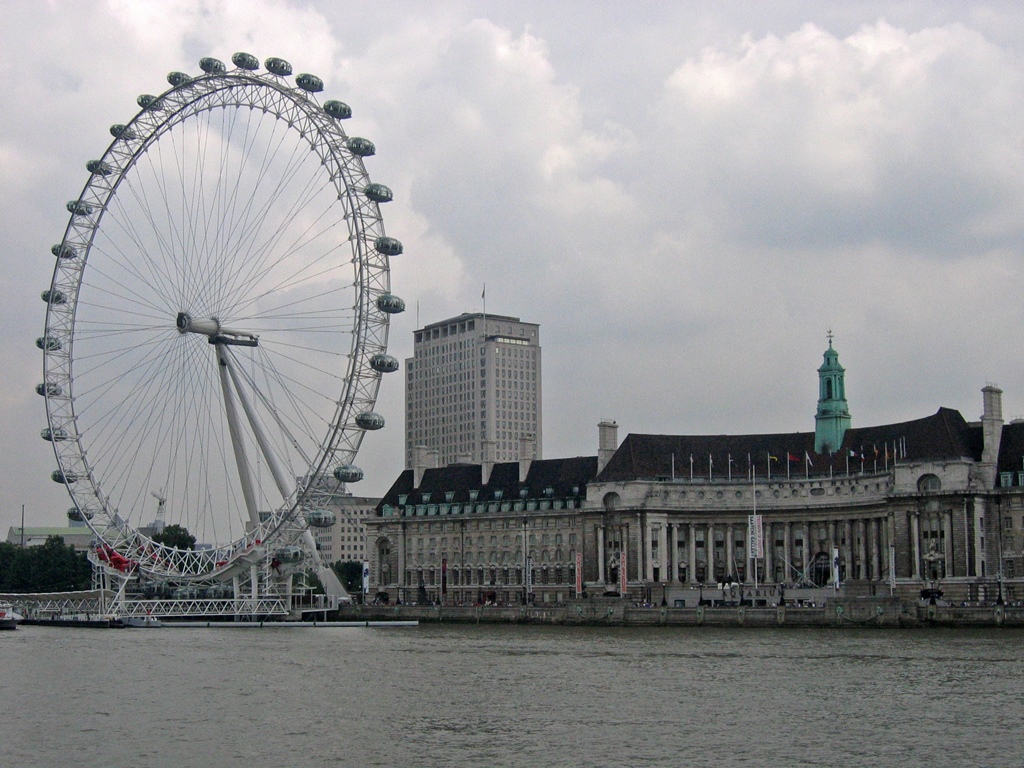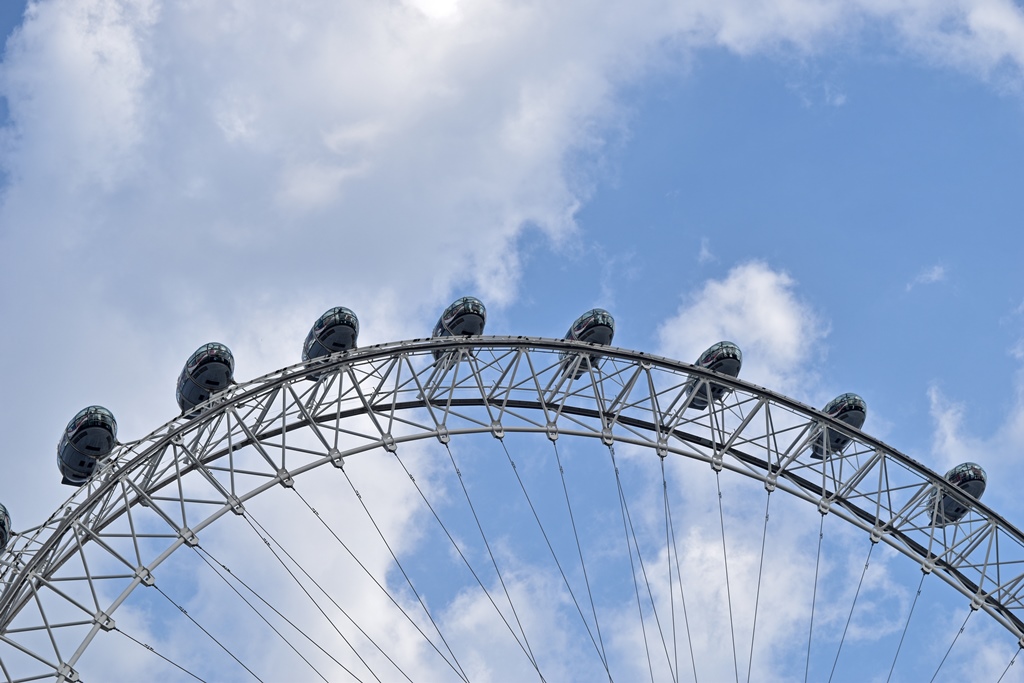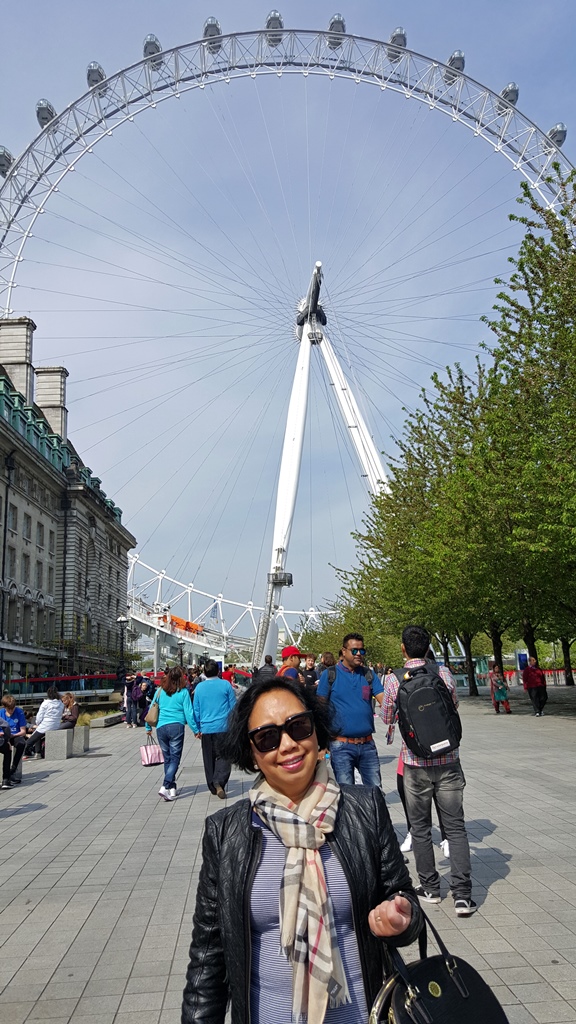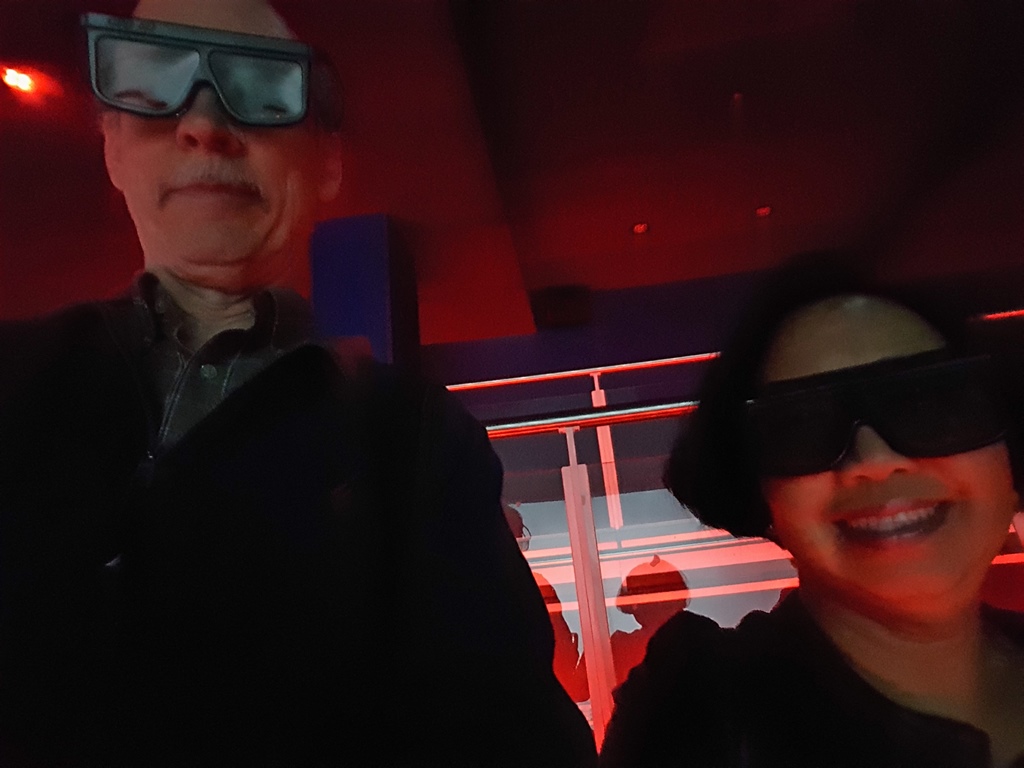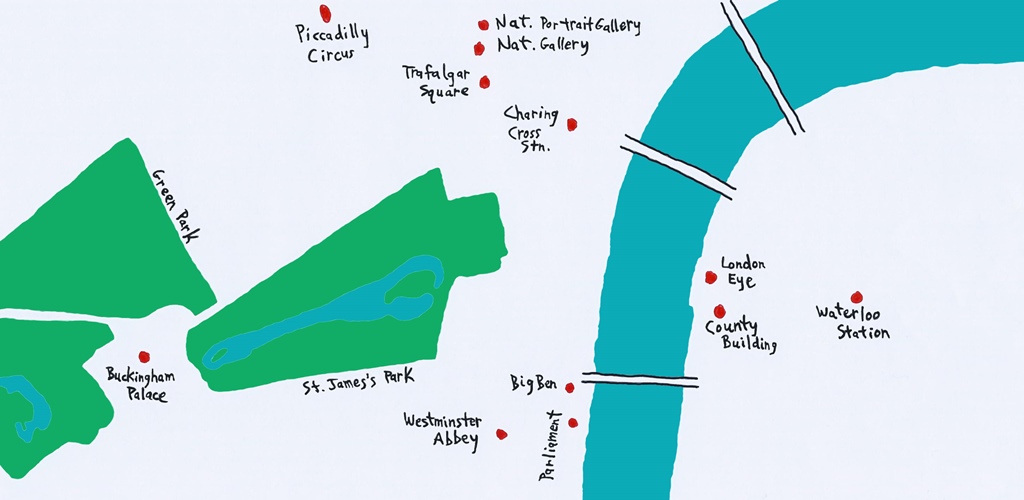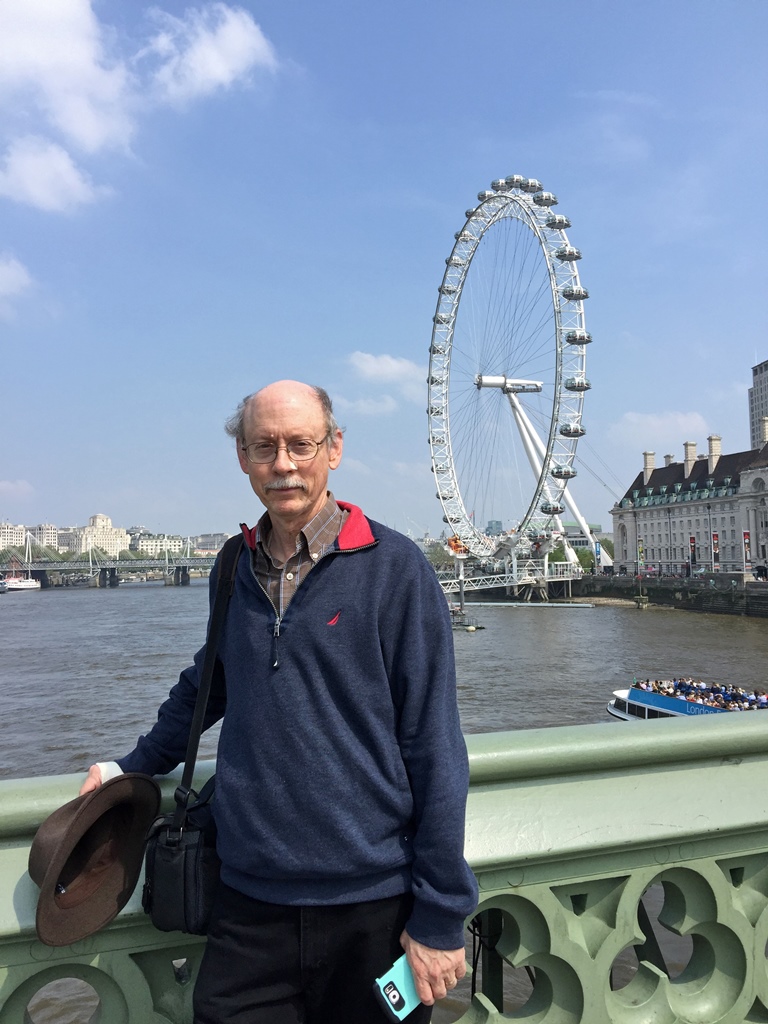London Eye and County Hall
Our next destination, the London Eye, was and is a gigantic Ferris wheel and one
of the top tourist attractions in London. It's found in the borough of Lambeth,
just across the Thames from Westminster and perched on the edge of the river next
to the County Hall Building. It was built in 1999 (a combined effort of several
European countries), but was not opened to the public until March of 2000. It is
still sometimes referred to as the Millennium Wheel. At the time of its completion,
it was the tallest Ferris wheel in the world, with a height of 443 feet (135
meters). It is now just the fifth tallest, with the "High Roller" in Las Vegas
being the tallest at 550 feet. The wheel was assembled on platforms floating in
the Thames, and was slowly tilted up onto the riverbank over a period of several
days. It is supported by a single A-frame "kickstand" on its landward side and is
billed as "the world's tallest cantilevered observation wheel" (I couldn't say how
much competition there is in this particular category). The A-frame obviously
keeps the wheel from falling over onto the County Hall Building (and any tourists
who might happen to be in the area), but it also appears to be the main support
keeping the wheel from toppling back into the river – there are a few cables
connected on the landward side, but they don't appear as though they'd be up to
the task of holding up the massive wheel (1,700 tonnes of steel) by themselves.
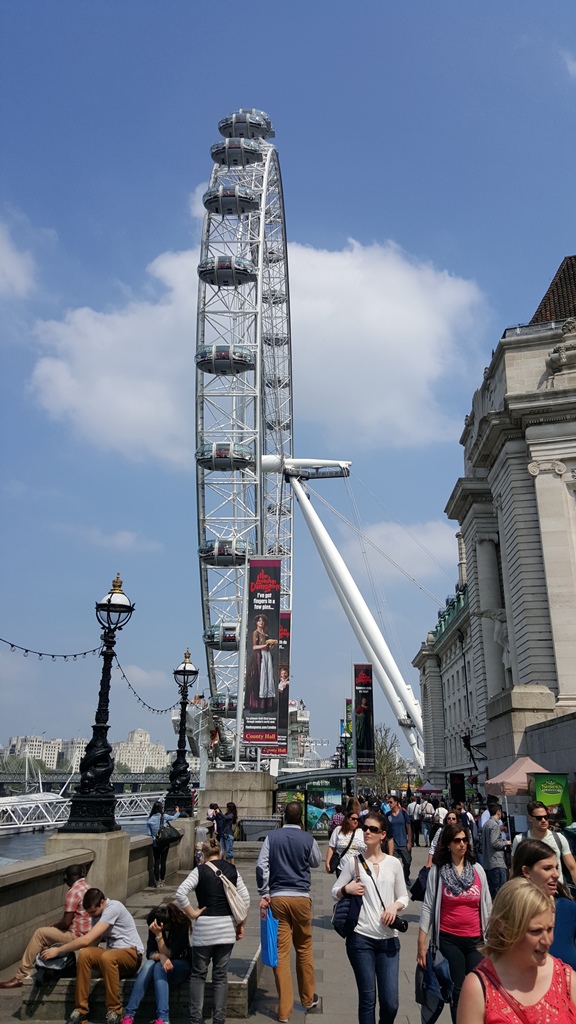
London Eye from Queen's Walk
Passengers on the London Eye ride in enclosures called "capsules", which are
designed to hold up to 25 people each. The passengers are not restrained, and
are free to walk around in the capsules, though there's a large central
platform on which they can sit if so inclined. There are 32 capsules on the
wheel, one for each of the boroughs of London (and also a convenient exponent
of two), numbered from 1 to 33. Don't scratch your head too much on this – there's
no capsule 13, as that would be unlucky. And capsule 33 isn't between capsules 32
and 1 – it's where capsule 13 would be, if there were a capsule 13.
London Eye Capsules
The London Eye seemed as though it would be a good way to start our day, as it
would give us a nice birds-eye view of some London landmarks, prior to actually
visiting some of them. We took the Underground to the closest stop, which
appeared to be the massive Waterloo Underground and Railway Station a short
distance east of the Eye. We proceeded to the ticket office, located in the
County Hall Building.
Nella and London Eye
The London Eye is not a cheap ride. At the time of our visit, a Standard ticket
cost above 21 pounds, or more than $30 in U.S. money, and as of this writing,
that amount has gone up to 27 pounds. In our case, we'd bought combination
tickets online that also included a river cruise (stay tuned for a future page
on this). There are also other combination tickets available – see
the London Eye website
for info. All of the tickets seemed to come with the "London Eye 4D Cinema
Experience", about which I recall absolutely nothing. Apparently there were
3D glasses involved (see photographic evidence below). Not sure what the fourth
dimension was. Maybe time – a few minutes we'll never get back.
Bob and Nella at 4D Show
After the Experience, we were sent over to the Eye itself, where we joined a
waiting line to board. The line wasn't very long for us – I don't know whether
this is typical or unusual – and moved pretty steadily. Apparently the wheel
is constantly turning, and doesn't normally stop for boarding and disembarking
(though occasional brief stops to accommodate disabled people do happen). This
is possible because the wheel moves very slowly – one revolution every 30
minutes. Not really a thrill ride, unless you're afraid of heights. Your ride
consists entirely of this 30 minutes, which might not sound like much for the
money, but which is more than enough time to view and photograph the surrounding
area.
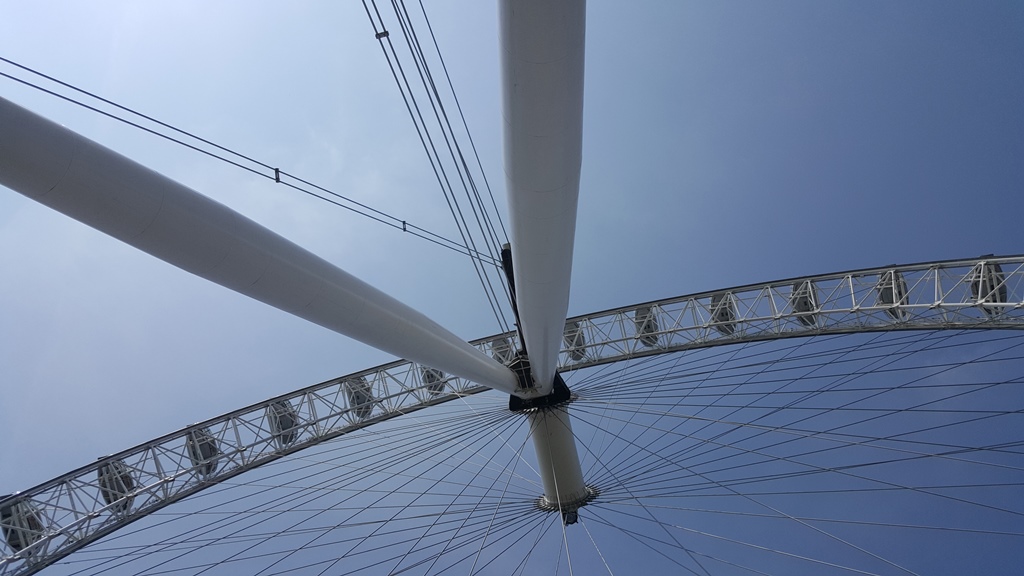
London Eye from Below
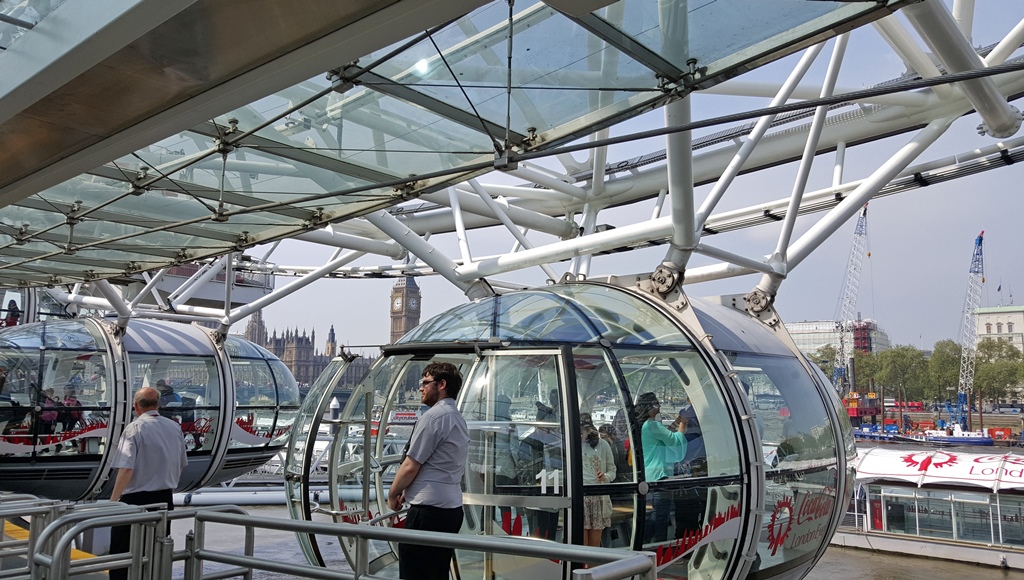
Boarding Area
Eventually we were ushered into one of the capsules and began our rotation.
We found the capsule comfortably roomy, even with our fellow passengers (well
under 25 of them in our case). There were clear views in all directions, though
the glass walls were subject to a bit of reflection or smudginess in spots.
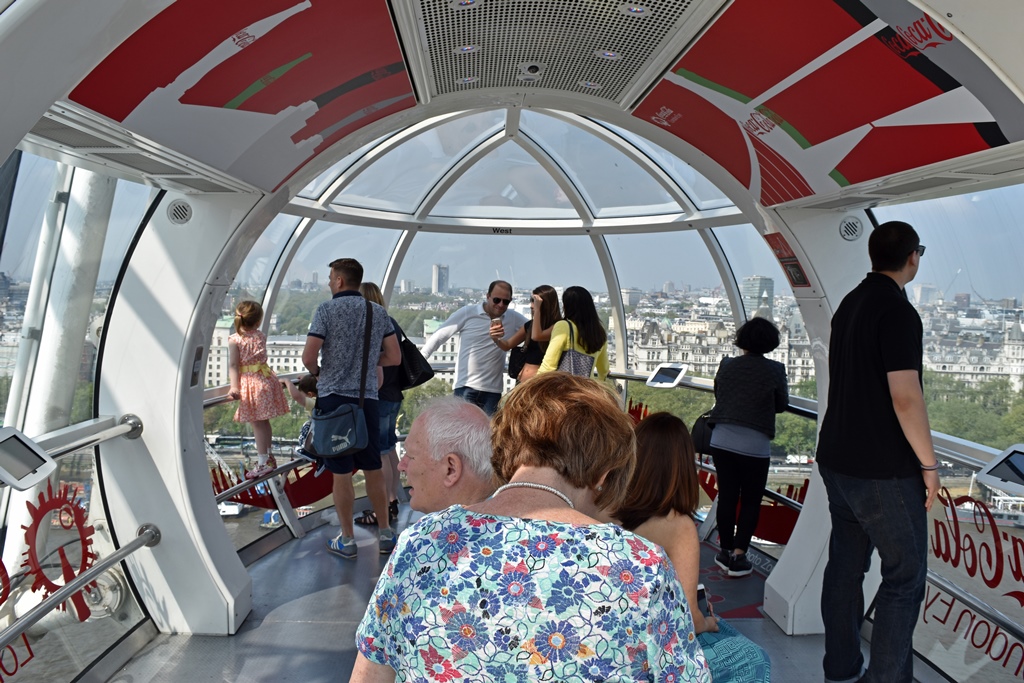
Inside the Capsule
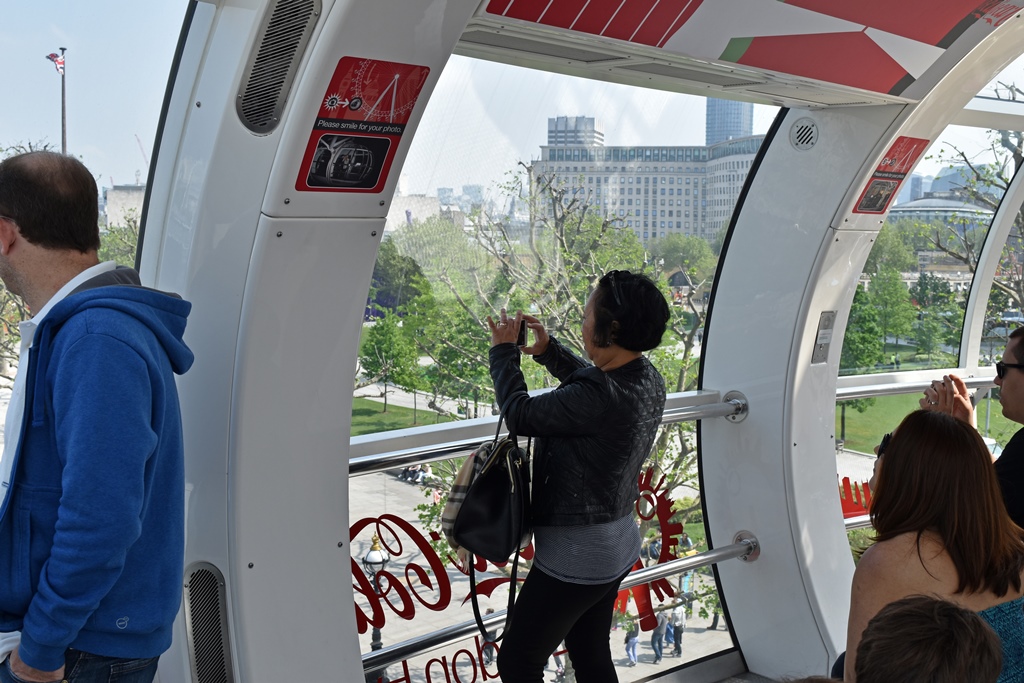
Nella Taking a Picture
The directions themselves were possibly a little confusing to out-of-towners – though
the Thames generally flows from west to east, the London Eye is situated on a kink in
the river in which it's flowing more from south to north. So if you're looking across
the river expecting to be looking north, you may be surprised to find yourself looking
west instead.
Westminster-Lambeth Area
From the Lambeth side of the river, the Eye rotates in a counter-clockwise
direction, which means you start with a northward ascent. Starting at river
level, the first things you notice to the north are the local bridges. The
closest bridge is actually a grouping of bridges – a pair of narrow footbridges,
called the Golden Jubilee Bridges, on either side of a central railway bridge
(leading to the Charing Cross railway station across the river), known as the
Hungerford Bridge. The next bridge is for vehicular traffic and is called the
Waterloo Bridge.
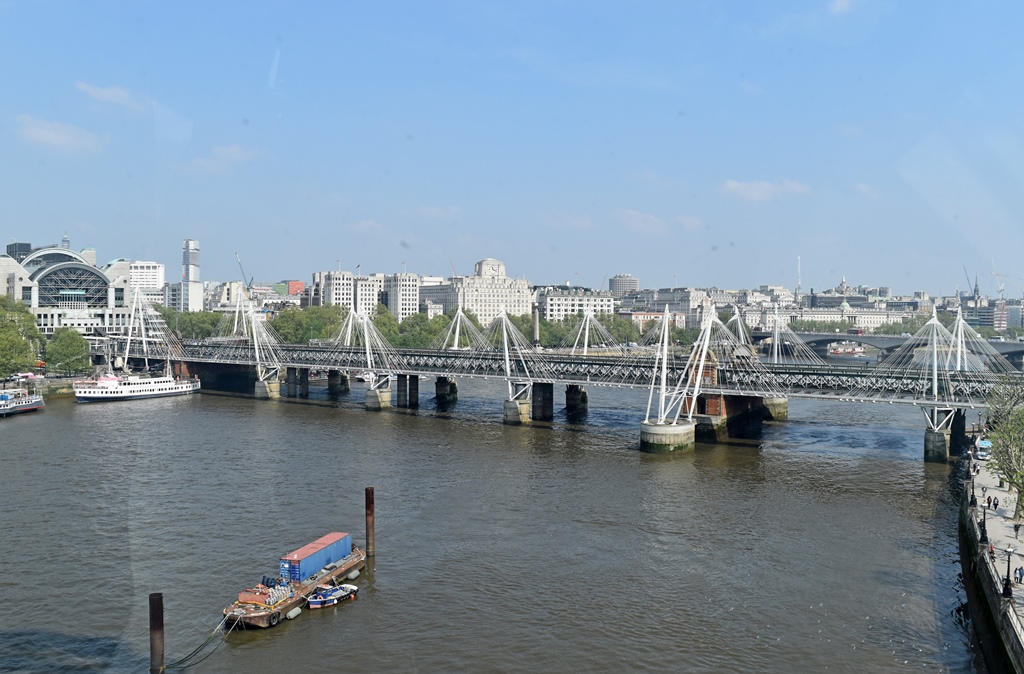
Hungerford and Golden Jubilee Bridges
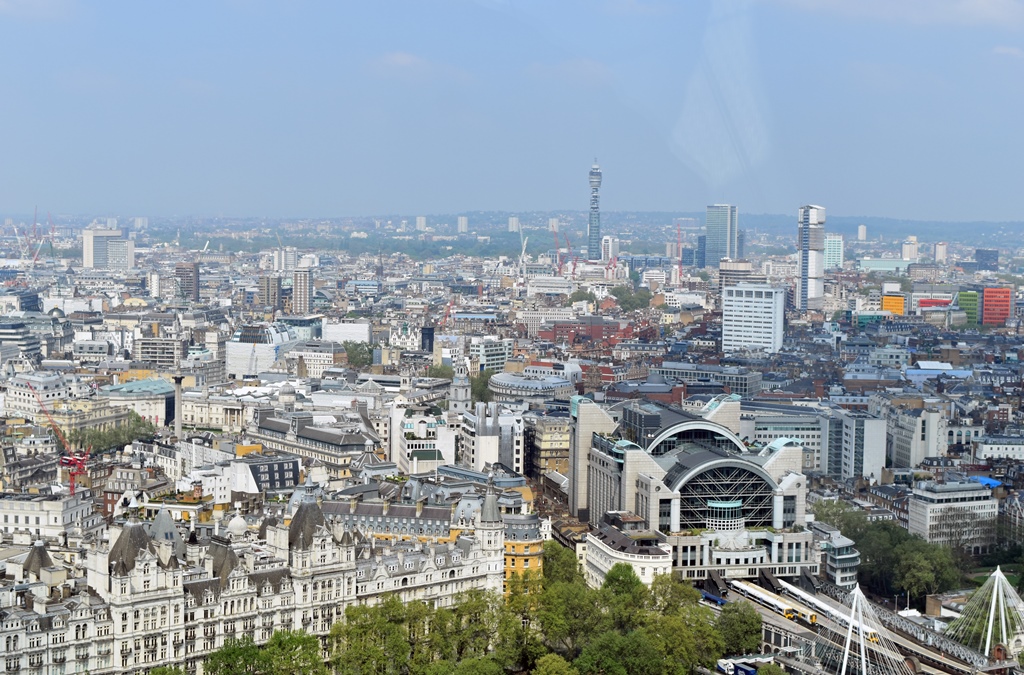
Whitehall Area and Charing Cross Station
From higher up, you can see the modern skyscrapers of London's business
center to the northeast. In addition to their official names, some of these
buildings have fanciful nicknames inspired by their appearances (e.g. "Cheese
Grater", "Walkie Talkie"). Somewhat closer and much older is the dome of St.
Paul's Cathedral. Almost due east, you can see a building called The Shard,
completed in 2012, which is the tallest building in the European Union at
1,017 feet. And to the southeast is the Waterloo Railway and Underground
station, whose large size can be fully appreciated from this vantage point.
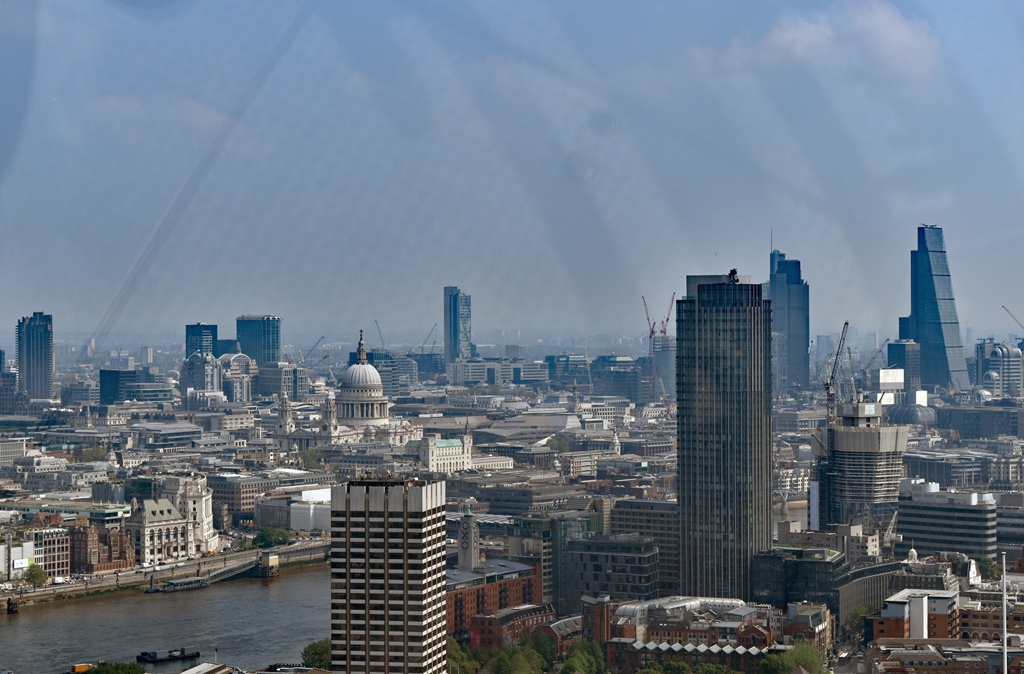
St. Paul's Cathedral, Business Center
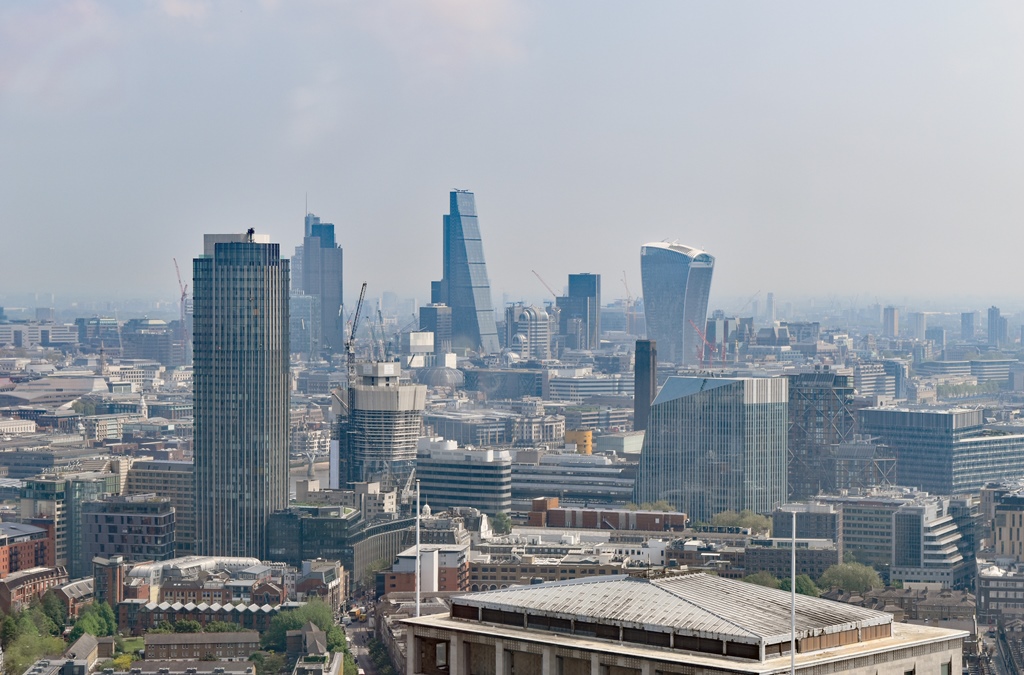
Business Center Buildings
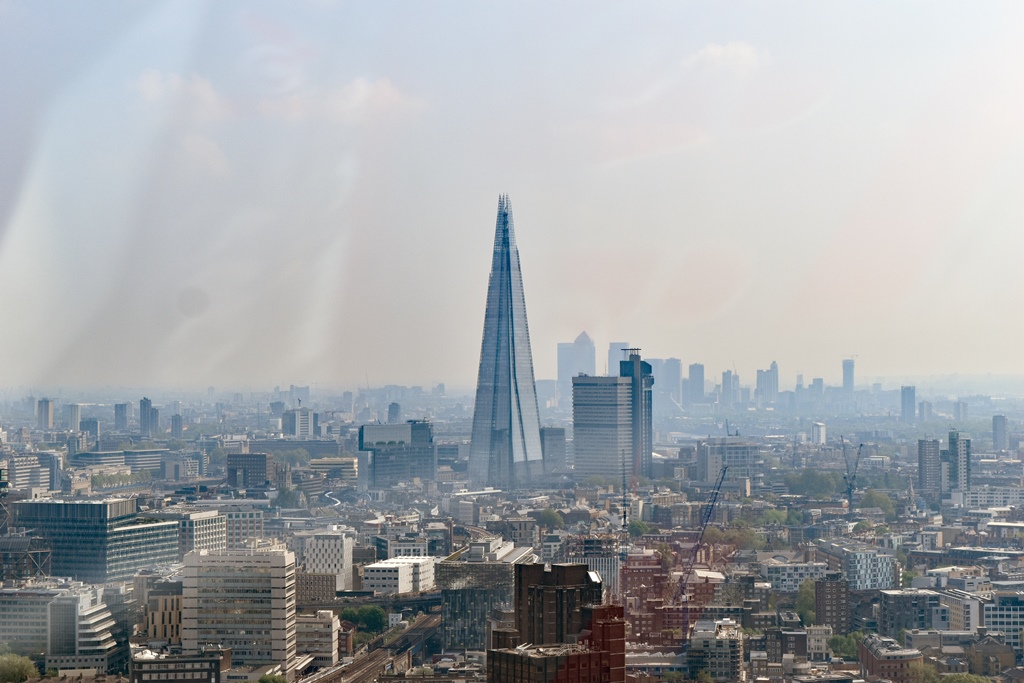
The Shard
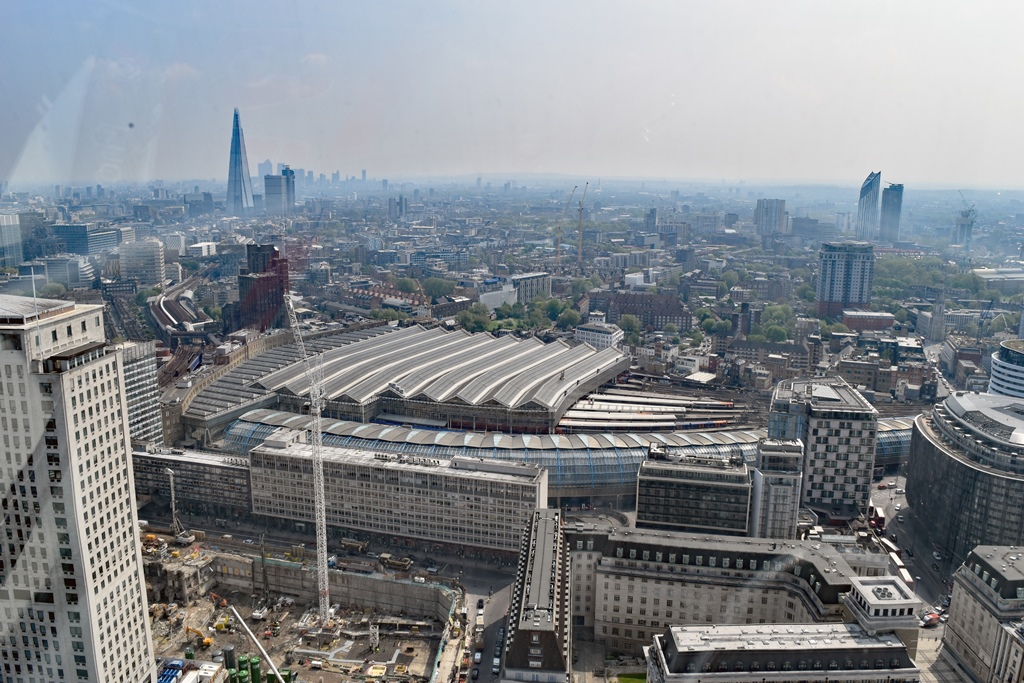
Waterloo Station
Eventually our capsule reached the top of the wheel. This is where you can
truly see in all directions and where acrophobics get queasy.
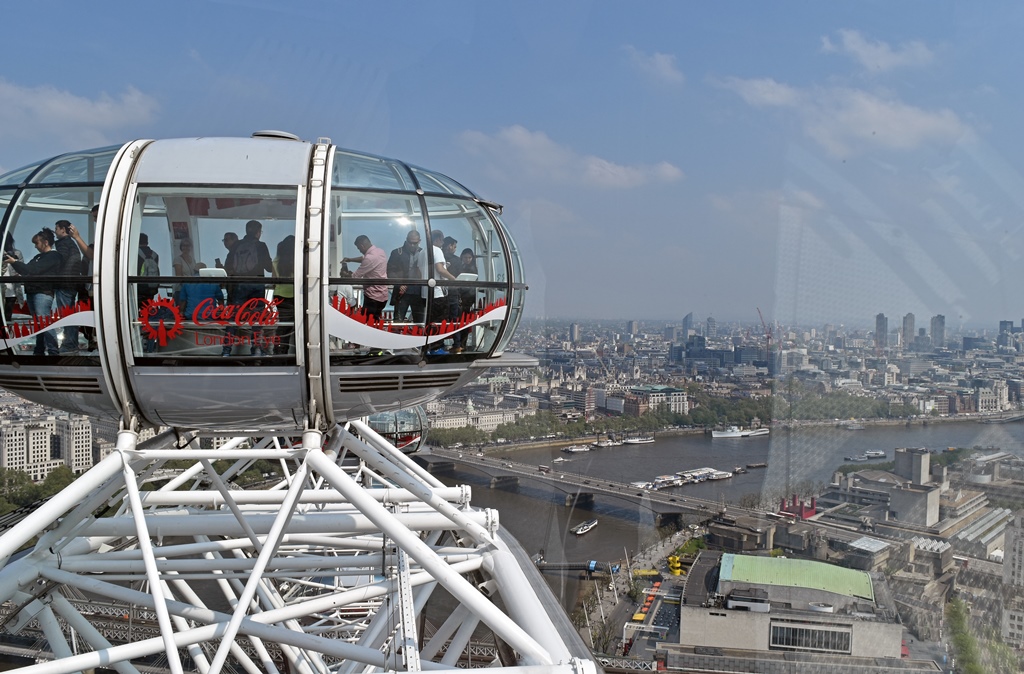
Next Capsule and Waterloo Bridge
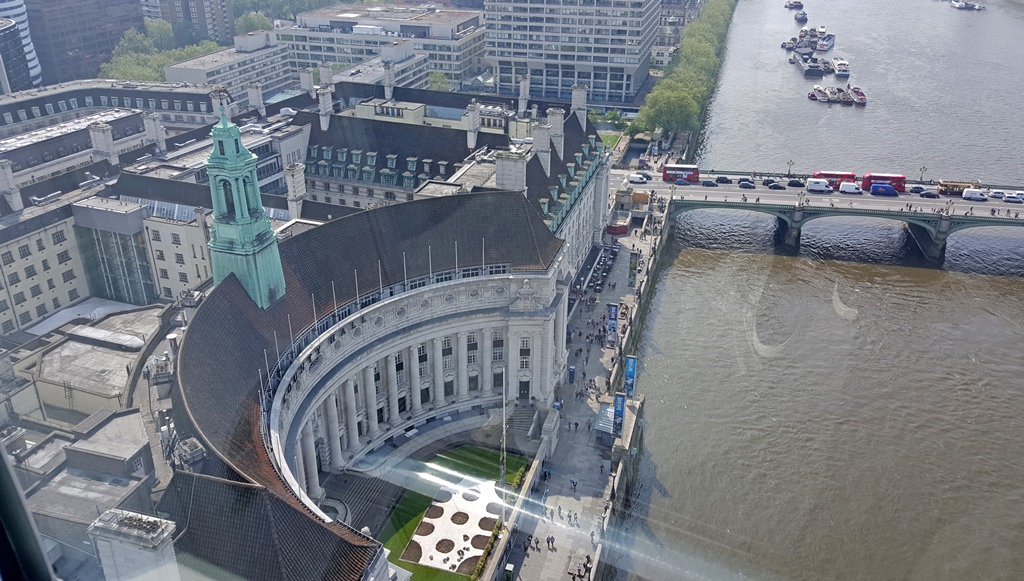
County Hall Building
What goes up must come down, and at this point we started descending, but on
the south side of the wheel. This is where the best views can be had of the
Westminster area, including the Houses of Parliament, Big Ben, and Westminster
Abbey. In the distance to the west, it's possible to catch a glimpse of
Buckingham Palace.
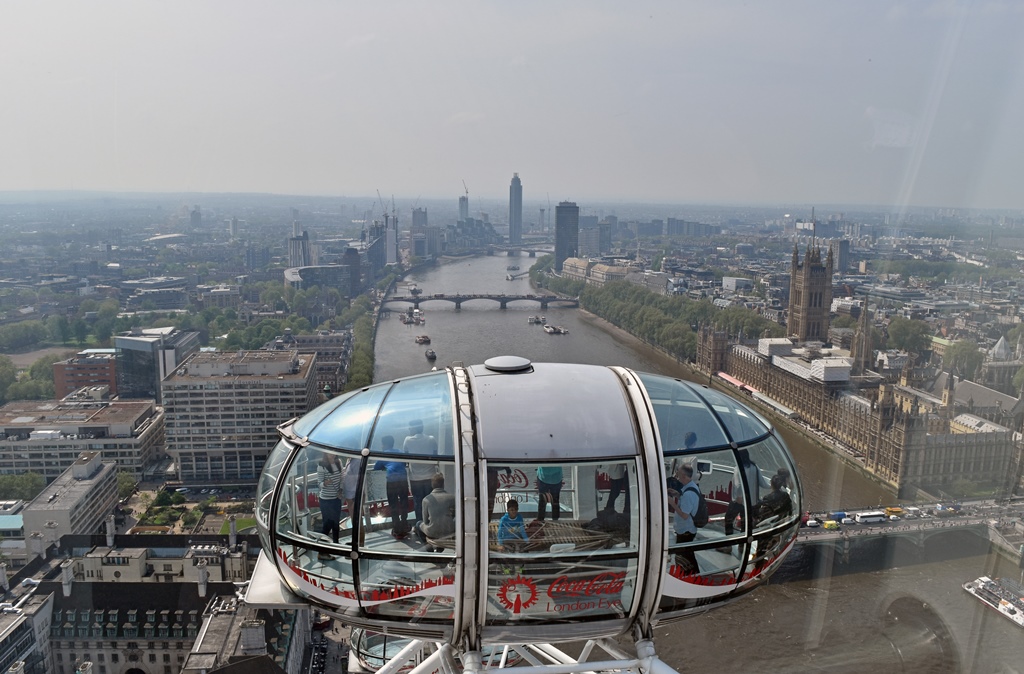
Next Capsule, Parliament and Thames
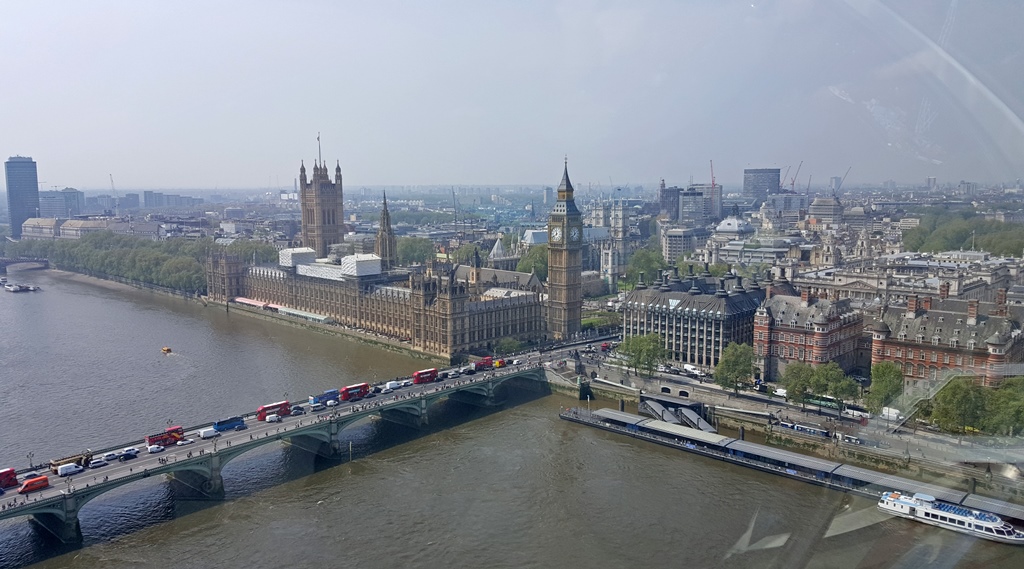
Houses of Parliament, Westminster Bridge
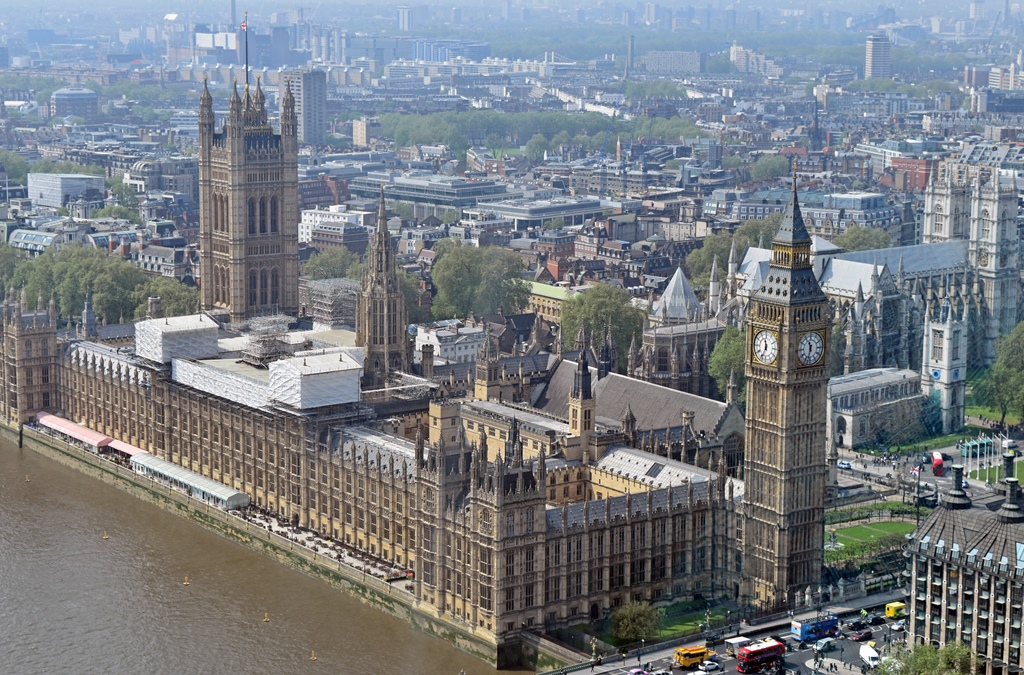
Houses of Parliament and Westminster Abbey
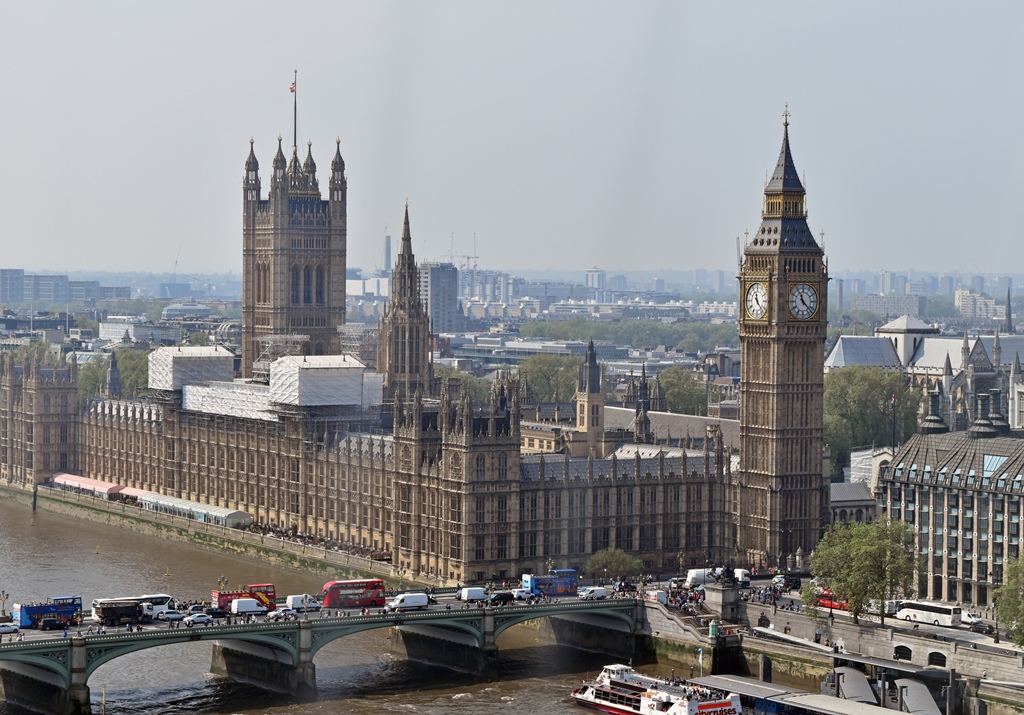
Houses of Parliament, Westminster Bridge
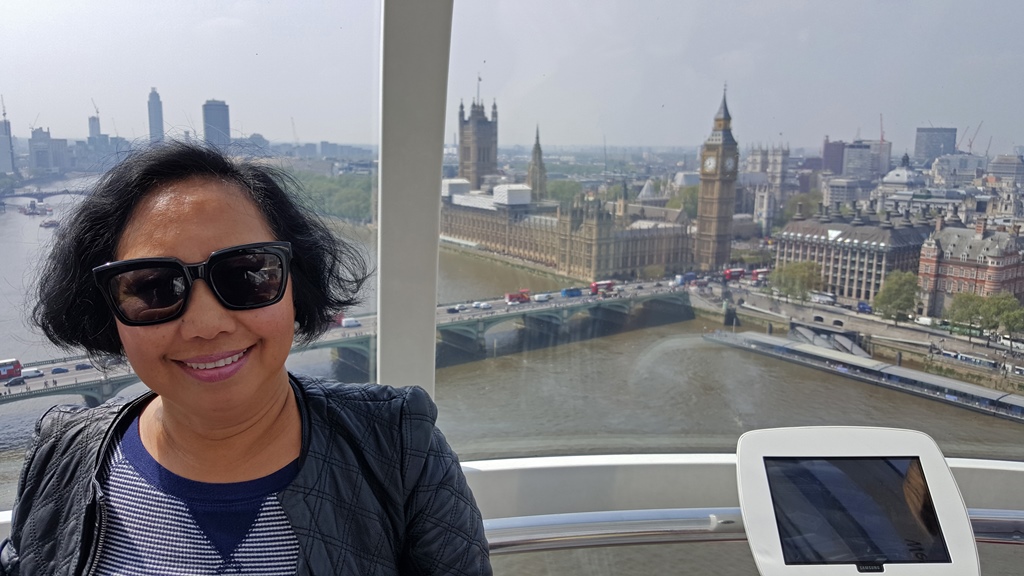
Nella with Houses of Parliament
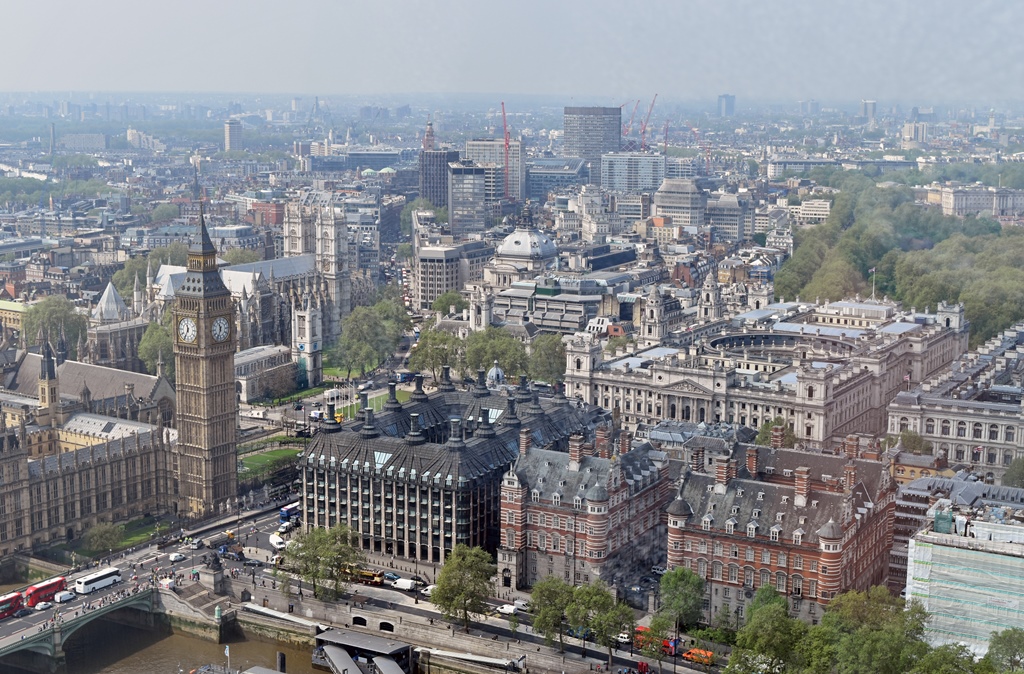
Westminster Area Buildings
Buckingham Palace and Westminster Area
Returning to ground level, we filed out of our capsule, having already decided
on our next adventure. This involved crossing the river, which we did at
Westminster Bridge to the south.
Bob and London Eye from Westminster Bridge
Naturally this took us into the City of Westminster and to the area's primary
attraction (as far as we were concerned anyway), Westminster Abbey.

